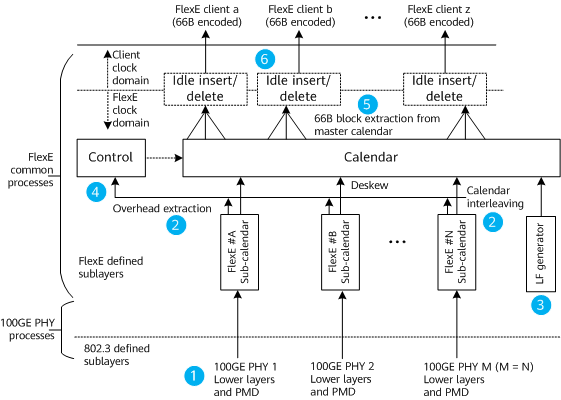FlexE Demux
The FlexE demux function defined in the FlexE standards refers to the FlexE shim function in the receive direction of an interface. That is, the FlexE client is demapped from the FlexE group in the receive direction. As shown in Figure 1, a FlexE group consisting of 100GE PHYs is used as an example to describe the working process of FlexE demux.
- The lower layers of the PCS of the PHYs are used according to the standard Ethernet defined by IEEE 802.3. The PCS lanes complete operations such as deskewing and alignment marker removal, and send traffic to the FlexE shim.
- The calendar logically interleaves the sub-timeslots of each FlexE instance, re-orders them, and extracts the FlexE overhead.
- If any PHY in the FlexE group fails or overhead frame/multiframe locking is not implemented for any FlexE instance, all FlexE clients in the FlexE group generate local faults (LFs).
- The control function manages the timeslots extracted by each FlexE client from each FlexE instance in the receive direction.
- The extracted timeslots are sent to each FlexE client based on the 66B blocks.
- The rate of a FlexE client is adjusted in idle insertion/deletion mode when necessary, and the stream of 66B blocks is extracted to the FlexE client at the adaptation rate. Similarly, because the alignment marker on a PHY of the FlexE group and the FlexE overhead occupy space, the rate of the FlexE client after the adaptation is slightly lower than the nominal rate of the FlexE client.
